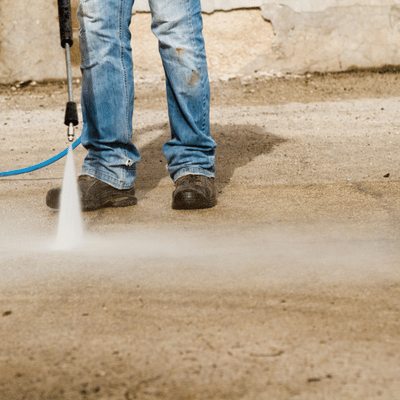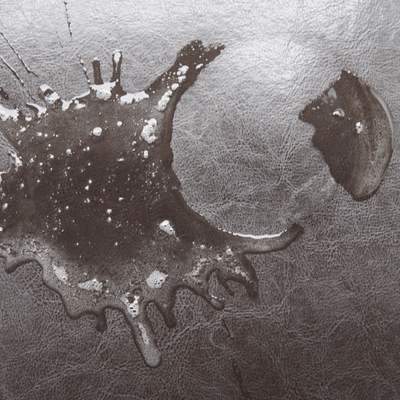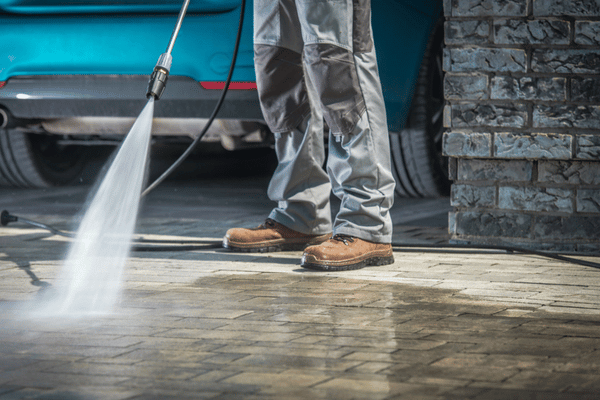Concrete flooring offers unmatched durability and style. But even the toughest floors need proper care. Learn how to care for concrete floors with simple concrete floor maintenance practices that preserve their beauty for decades.
Regular cleaning prevents wear and tear from destroying your floor's finish. Dirt acts like sandpaper on concrete surfaces. Daily dust removal stops this damage before it starts.
Neglected floors develop cracks and safety hazards. Small problems become expensive repairs. A basic concrete care routine saves thousands in maintenance costs later.
Well-sealed concrete resists stains and moisture. But protective coatings need care too. Skip the upkeep and your floor loses its stain resistance fast.

Start with dust mopping every day. Use a soft broom or microfiber mops to grab loose dirt. A vacuum cleaner on hard floor settings works great for corners and textured areas.
This simple step prevents scratches that dull your floor's shine. Vacuuming takes just minutes but makes a huge difference.
Add damp mopping twice weekly. Mix warm water with a pH-neutral floor cleaner. Avoid soaking the floor. Light moisture lifts dirt without damaging coatings.
Always dry mop afterward to prevent water spots. This cleaning regimen keeps most concrete flooring looking new for years.
Clean spills right away. Even sealed floors can stain if liquids sit too long. Quick action stops permanent damage.
Never use bleach, ammonia, or vinegar on concrete. These harsh chemicals destroy protective coatings and etch the concrete surface.
Pick pH-neutral detergents made for concrete flooring. Many cleaning products work perfectly. Even mild dish soap mixed with water cleans safely.
Need a disinfectant? Choose products labeled safe for sealed concrete. Modern cleaning supplies like antimicrobial disinfectant cleaners kill germs without harsh chemicals. Always read labels before using any cleaning supplies.
Use the right tools too. Microfiber mops and dust mops trap dust without scratching. Soft scrubber pads work for deeper cleaning. Save wire brushes and abrasive pads for outdoor projects only.
Large areas benefit from a floor buffer or auto scrubber machine. These auto scrubber machines deep clean and restore gloss to high traffic zones. Professional scrubber equipment handles tough cleaning challenges in commercial settings.

Oil stains happen in garages and kitchens. Soak up fresh spills with cat litter or baking soda. Let it sit for hours, then sweep up.
Apply concrete cleaner and scrub with a stiff brush. Rinse well and repeat if needed. Fresh oil comes out easily. Old stains need specialty products for complete stain removal.
Food spills clean up like any hard surface. Use neutral floor cleaner and warm water. For organic messes like pet accidents, try enzymatic cleaners that break down proteins and odors.
Acid spills are emergencies. Battery acid or strong cleaners will etch concrete permanently. Cover acid spills with baking soda immediately. The fizzing action neutralizes the acid. Rinse thoroughly after neutralizing.
Rust stains from metal objects need special care. Commercial rust removers work, but test them first in hidden areas. Lemon juice helps light rust but rinse quickly to prevent etching.
Quick cleaning keeps floors looking perfect. The longer stains sit, the harder they become to remove.
Smart floor care starts with protection. Sealing creates an invisible barrier that stops stains and moisture damage.
Most decorative concrete gets sealed during installation. But sealers wear off over time. High traffic areas need fresh coatings every 2-3 years. Light use floors can go 4-5 years between applications.
Apply floor wax over protective coatings for extra protection. Floor wax takes daily abuse so your sealer lasts longer. It's cheaper to replace wax than reseal the whole floor.
This two-layer system works great in garages and commercial spaces. The wax adds shine while protecting expensive coatings underneath.
Polished concrete is different. The polishing process hardens the surface naturally. These floors rarely need sealers or wax. Just keep them clean and buff occasionally to maintain the gloss.
Epoxy coatings offer maximum protection in workshops and garages. These thick protective films resist chemicals, impact, and grease better than any other option. They also provide excellent moisture protection for basement floors.
Different sealing methods suit different needs. Water-based products work well indoors with low odor. Solvent-based options handle heavy outdoor traffic better.
Stop problems before they start with smart prevention
Place mats at all entrances. They catch dirt and moisture before it reaches your concrete. This simple step cuts cleaning time in half.
Use furniture pads under chairs and tables. Felt pads prevent scratches when furniture moves. Never drag heavy items across concrete floors.
Avoid hard-soled shoes on decorative floors. Metal cleats and spike heels can dent certain floor finish materials. Set up shoe rules for interior concrete.
Fix small cracks immediately. Concrete patch products cost a few dollars and take minutes to apply. Ignore cracks and they spread into expensive problems. Monitor for new cracks during regular maintenance practices.
Watch for early wear signs. Dull spots in walkways mean it's time for maintenance tasks like rewaxing or polishing these areas to restore shine.
Remove ice melt and road salt quickly in winter. These chemicals can damage concrete if left sitting. Rinse them away regularly to prevent damage.
Use your vacuum cleaner weekly to remove fine dust that regular sweeping misses. The vacuum cleaner prevents buildup that dulls the surface over time.
Smart maintenance tips include checking your disinfectant products for concrete compatibility. Some harsh cleaners create safety hazards by making floors slippery or damaging the surface.
Some concrete floor maintenance tasks need expert skills. Deep cracks or structural damage require professional assessment. Don't ignore these safety hazards.
Extensive staining might need restoration services. Contractors can strip old coatings, clean deep stains, and apply fresh protection. This restoration process makes old floors look new again.
Lost the shine on polished concrete? Professional services remove surface damage and restore that mirror finish. It's like refinishing hardwood floors.
Badly worn protective films need complete removal and replacement. Professionals have the tools and materials for this job. The results last for years.
Major repairs cost more than basic upkeep. But professional restoration beats replacement every time. Most floors can return to perfect condition with proper care.
Regular maintenance prevents most problems. But when issues arise, quick repairs keep small problems from becoming major headaches.

Transform your concrete floor maintenance with these proven strategies. Start today with daily dust mopping and weekly wet cleaning.
Invest in pH-neutral products and quality tools. Protect your investment with proper sealing every few years. Handle spills immediately and fix small problems fast.
Ready to give your floors the care they deserve? Contact us for professional sealing or restoration services. Your floors will thank you with decades of beautiful service.
How often should I clean my concrete floors? Dust mop daily to remove grit that creates surface damage. Damp mop 2-3 times weekly with neutral cleaner. Clean spills immediately to prevent permanent staining of the concrete.
Can I use regular household cleaners on concrete? Avoid bleach, ammonia, and vinegar as these damage concrete and protective films. Stick to pH-neutral products or mild soap mixed with water for safe daily cleaning without surface damage.
When do concrete floors need resealing? High traffic areas need fresh protective layers every 2-3 years. Light use floors can go 4-5 years between applications. Watch for water soaking in instead of beading up - that means protection is wearing thin.
What's the best way to remove oil from concrete? Act fast by absorbing fresh grease with cat litter or baking soda. Let it sit for hours, sweep up, then scrub with degreaser and a brush. Rinse thoroughly and repeat if needed for complete removal.

